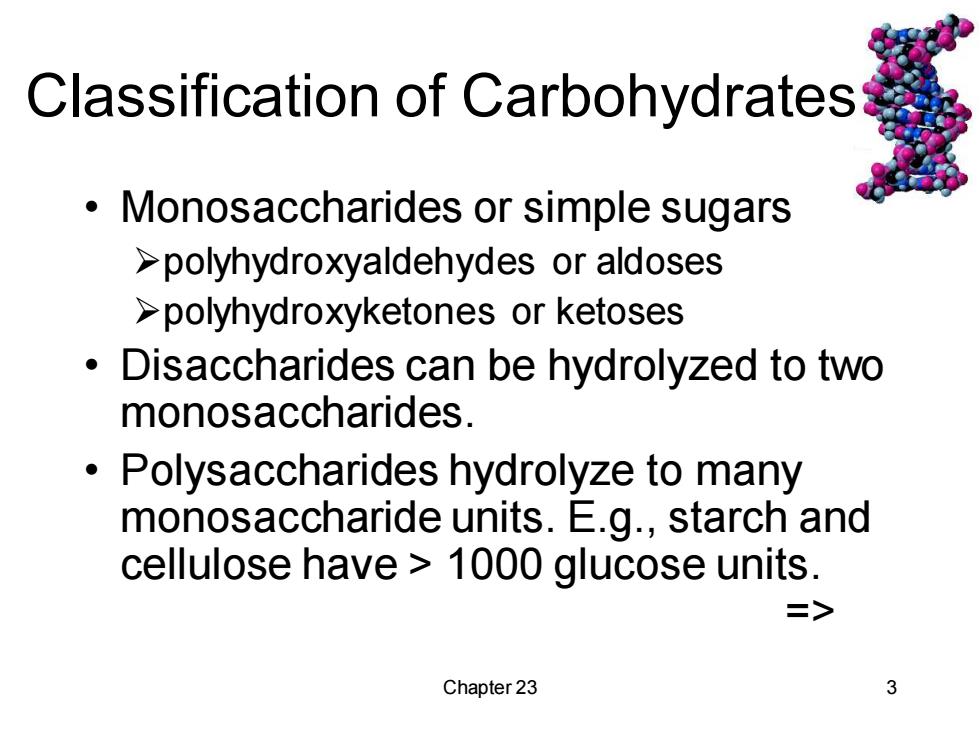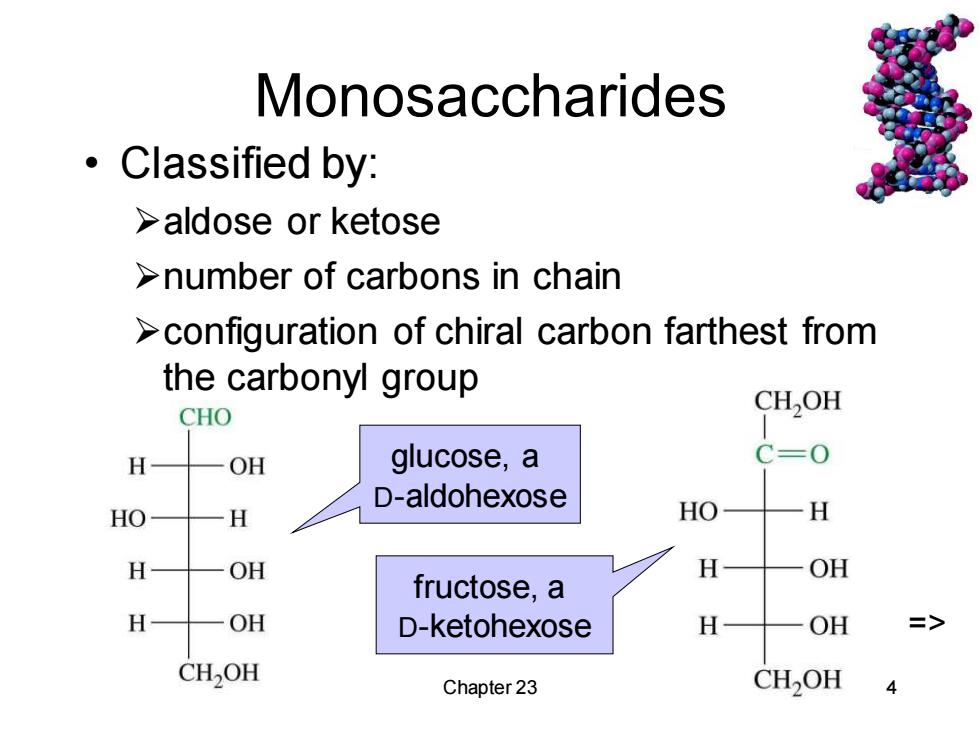
Organic Chemistry,6th Edition L.G.Wade,Jr. Chapter 23 Carbohydrates and Nucleic Acids Jo Blackburn Richland College,Dallas,TX Dallas County Community College District ©2006,Prentice Hall
Chapter 23 Carbohydrates and Nucleic Acids Jo Blackburn Richland College, Dallas, TX Dallas County Community College District © 2006, Prentice Hall Organic Chemistry, 6th Edition L. G. Wade, Jr

Carbohydrates Synthesized by plants using sunlight to convert CO2 and H2O to glucose and O2. Polymers include starch and cellulose. Starch is storage unit for solar energy. Most sugars have formula C(H2O)n, “hydrate of carbon.” 二> Chapter 23 2
Chapter 23 2 Carbohydrates • Synthesized by plants using sunlight to convert CO2 and H2O to glucose and O2 . • Polymers include starch and cellulose. • Starch is storage unit for solar energy. • Most sugars have formula Cn (H2O)n , “hydrate of carbon.” =>

Classification of Carbohydrates Monosaccharides or simple sugars >polyhydroxyaldehydes or aldoses >polyhydroxyketones or ketoses Disaccharides can be hydrolyzed to two monosaccharides. Polysaccharides hydrolyze to many monosaccharide units.E.g.,starch and cellulose have 1000 glucose units. => Chapter 23 3
Chapter 23 3 Classification of Carbohydrates • Monosaccharides or simple sugars ➢polyhydroxyaldehydes or aldoses ➢polyhydroxyketones or ketoses • Disaccharides can be hydrolyzed to two monosaccharides. • Polysaccharides hydrolyze to many monosaccharide units. E.g., starch and cellulose have > 1000 glucose units. =>

Monosaccharides Classified by: >aldose or ketose >number of carbons in chain >configuration of chiral carbon farthest from the carbonyl group CHO CH,OH 4 OH glucose,a C=0 D-aldohexose H HO H H OH H OH fructose,a H OH D-ketohexose H OH => CH2OH Chapter 23 CH2OH
Chapter 23 4 Monosaccharides • Classified by: ➢aldose or ketose ➢number of carbons in chain ➢configuration of chiral carbon farthest from the carbonyl group glucose, a D-aldohexose fructose, a D-ketohexose =>

D and L Sugars D sugars can be degraded to the dextrorotatory(+)form of glyceraldehyde. L sugars can be degraded to the levorotatory(-)form of glyceraldehyde. CHO C02↑ H一C一OH CHO C02↑ HO一C一H degrade HO一C一H degrade CHO CO2t H-C- OH H一C-OH H一C一OH CHO H-C-OH H-C-OH H-C-OH degrade H一C一OH CH2OH CH2OH CH2OH CH2OH D-(+)-glucose D-(-)-arabinose D-(-)-erythrose D-(+)-glyceraldehyde Copyright2005 Pearson Prentice Hall,Inc. => Chapter 23 5
Chapter 23 5 D and L Sugars • D sugars can be degraded to the dextrorotatory (+) form of glyceraldehyde. • L sugars can be degraded to the levorotatory (-) form of glyceraldehyde. =>